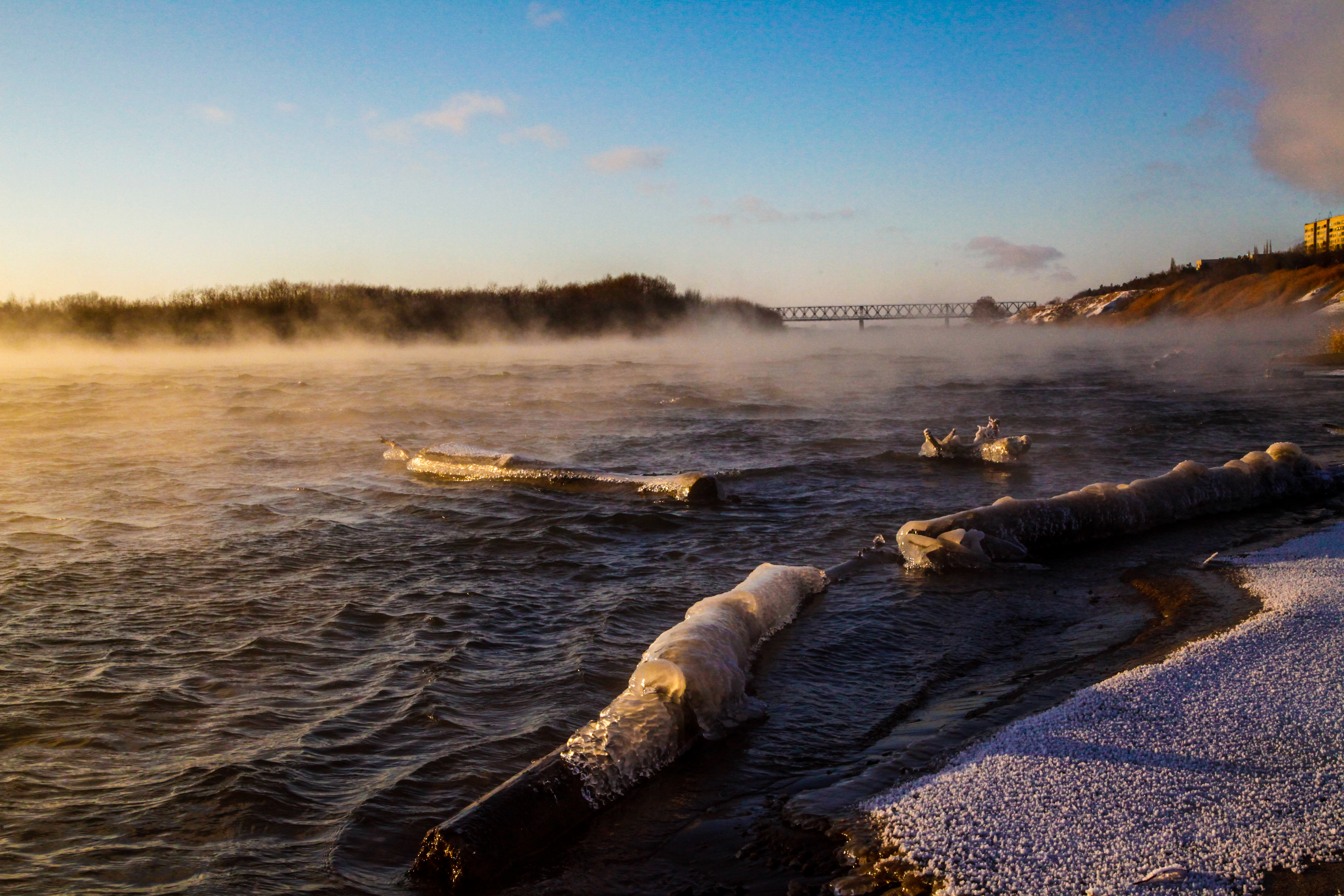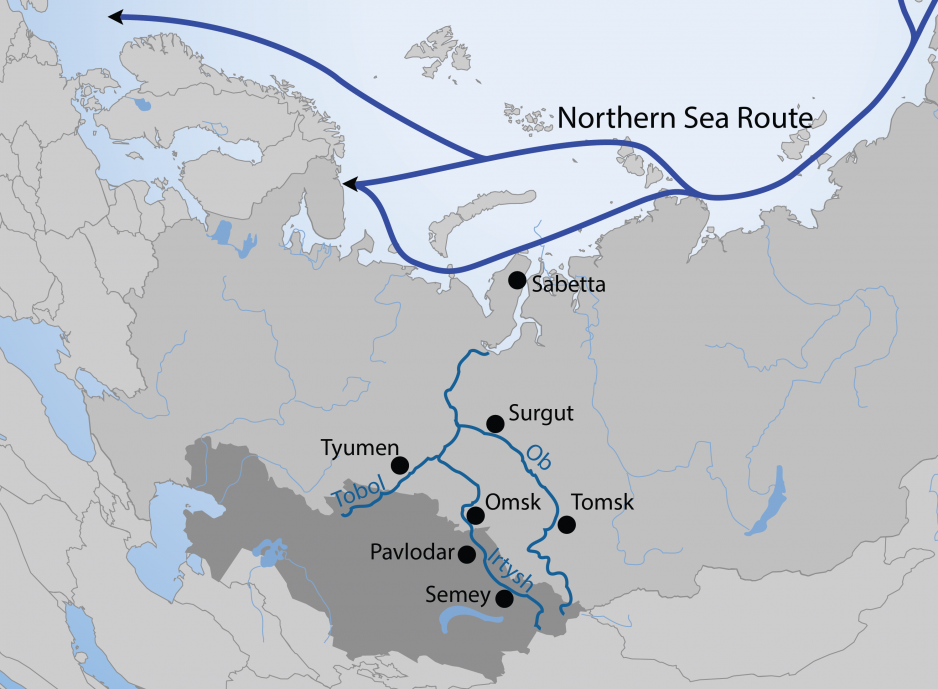Kazakhstan looks to the Arctic for a new trade route
Access to the Northern Sea Route could complement Kazakhstan's east-west rail and road infrastructure.

Kazakhstan aims to use the vast Ob-Irtysh river system to gain access the world’s oceans via the Arctic port of Sabetta. Russian President Vladimir Putin and Kazakh President Nursultan Nazarbayev are scheduled to discuss the project this fall in Omsk.
The landlocked central Asian country is furthering its efforts to develop new transport routes by utilizing Russia’s largest river system. Kazakhstan hopes to benefit from the rapid growth of Arctic shipping and piggyback along these newly developing trade routes. However, it must tread carefully as both Russia and China have vested interests in the region, including the latter’s Belt and Road Initiative.
Access via the Arctic
Kazakhstan’s existing infrastructure and trade routes are oriented in an east-west fashion connecting the country to Europe and Asia via land. With Russia developing Sabetta at the mouth of the Ob’ into a large-scale port, Kazakhstan now hopes to add a much-needed north-south dimension to its trade routes and utilize inland waterways to overcome the hurdle of not having direct access to the world’s oceans. The feasibility of this type of corridor was proven in 2016 when two large petrochemical reactors, each weighing in at more than 500 tons, were delivered from South Korea via the Northern Sea Route and along 2,000 kilometers of the Ob-Irtysh to Pavlodar.
Since 2016 Sabetta has developed into the largest port along the Northern Sea Route, with cargo volume growing more than five-fold to 17.4 million tons last year. In addition to a vast terminal to export up to 18 million tons of liquefied natural gas (LNG) per year from the South Tambeyskoye natural gas field, the port is adding multimodal containerized cargo capacity. A railroad connecting the harbor to Bovanenkovo to the southwest is also in the final planning stages.
“Initially, the seaport was meant as a dedicated gas off-loading port. But now, it has effectively become Ural’s gate to the sea,” explains the head of the Ural’s Customs Directorate Vyacheslav Goloskov. “It will open a completely new page in the history of the whole logistics of the Urals.”
Importance of Russia’s rivers
The Ob’-Irtysh is the world’s seventh-longest river and the westernmost of the three great Siberian rivers that discharge into the Arctic Ocean. The river is navigable for ocean-going vessels for more than 1,200 kilometers and navigable by cargo barges for thousands of kilometers more. In 2018 more than six million tons of cargo and around one million people were transported along the river.
Russia’s Siberian rivers have long been central to carrying goods for those living along their banks. In total more than 18 million tons of cargo and five million people are transported annually. “There is no alternative to the Amur, Yenisei, Lena and Ob river routes. The lives of people settled by the rivers’ banks totally depends on them,” explains Nikolai Patrushev, secretary of the Security Council of Russia.

With increasing shipping activity along Russia’s Arctic coastline there is renewed emphasis to further develop the river infrastructure and allow for economic benefits to travel upstream. The mouth of the Ob river at Yamal-Nenets is being developed by the West Siberian regional government and the river ports of Salekhard, Khanti-Mansyisk and Omsk are upgrading port facilities to facilitate growing river transport. And Russia’s latest generation of nuclear icebreaker are designed with dual-drafts, allowing them to navigate the shallower waters of rivers in addition to ploughing the deeper Arctic Ocean.
Furthermore, the safe navigation of the river system is a priority under Russia’s “2020 Development Strategy for the Russian Federation Transport System” and the “2030 Development Strategy for Inland Water Transport” under which it aims to develop a electronic database to ensure safer travel of the river by ocean-going ships.
Caught between Russian and Chinese interests
The feasibility of an Ob-Irtysh transport corridor will be in part dependent on the pace with which Russia continues to develop not only the port of Sabetta but also associated river infrastructure throughout the West Siberian Plain, which would connect the Kazakh ports of Pavlodar and Semey to the Russian river system.
Existing bilateral and regional trade agreements and cooperations will facilitate the expansion of traffic between Russia’s Omsk and Kazakhstan’s Pavlodar and Semey. Both countries are part of the Eurasian Economic Union, which entered into force in 2015, and also cooperate as part of the Shanghai Cooperation Organization. Since 2012 the two countries have cooperated on the dredging and maintaining of shipping lanes as well as the refurbishment and construction of berths and port infrastructure.
While Kazakh and Russian economic and security ties are strong, it remains to be seen to what degree Moscow will support the country’s ambitions and under what conditions. “Russia will try to subordinate Kazakhstan into a Russian-dominated system even as Kazakhstan seeks a more independent role,” explains Paul Goble, an American analyst and writer with expertise on Russia.
An additional variable will be China’s role in the region. With a strong emphasis on infrastructure development and a New Silk Road across Eurasia under the Belt and Road Initiative the Ob-Irtysh river system may eventually serve as a link between the Arctic Ocean and a central Asian Silk Road. But questions arise how Kazakhstan’s efforts will place it in conflict with or in the midst of both Russia’s and China’s plans for primacy in the region.
For now the port of Sabetta with its increasing LNG deliveries to Europe and Asia and Arctic shipping lanes being kept open year-round hold the promise of a future gateway to the rest of the world for Kazakhstan.